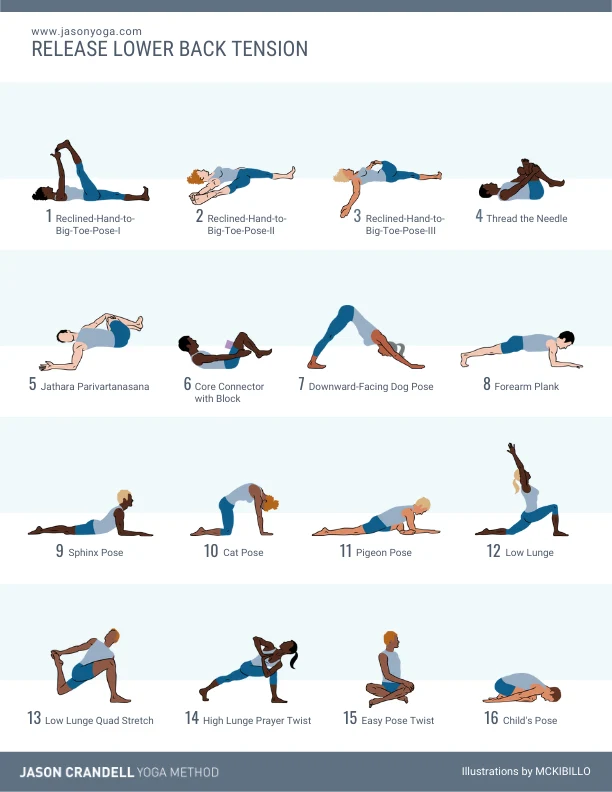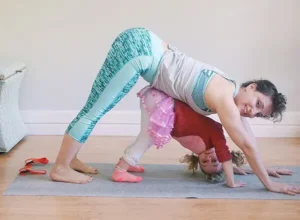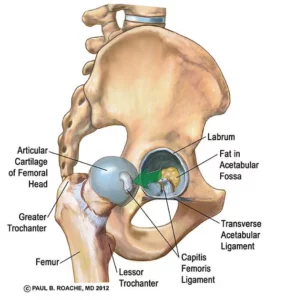I know back pain. I’ve dealt with varying degrees of back pain—from mild to severe—for more than 20 years. I’ve also worked with hundreds of students that have similar challenges. Whether their doctor has suggested trying yoga for back pain or they’ve just exhausted all other options, many students turn to yoga when they’re facing lower-back problems.
My yoga practice has provided me with an exceptional tool for managing my back and minimizing flare-ups. At the same time, there’s no one-size-fits-all formula for using yoga for back pain. Postures that soothe some students, agitate others. Yoga is for everybody, but not all postures are for everybody. With this in mind, the goal of this sequence is to provide you with some general principles and a simple sequence that may help you with general, overall lower-back maintenance. I’m hopeful that many of these postures–if not the entire sequence–will help you keep back discomfort at bay if you practice them regularly.
Of course, this sequence is not for acute pain, nor does it account for (or provide) specific diagnoses. If you’re in acute pain, please find a medical provider. Also, please omit all postures that are contrary to your medical provider’s suggestions.
One more thought: A detailed examination of yoga for back pain is beyond the scope of this blog post. But, before you launch into this sequence, there are a few important principles to pay attention to:
My Approach to Yoga for Back Pain
1. Focus on maintaining the natural curves of your spine, especially the lordotic curve of your lower back.
2. Focus on hip and leg flexibility. Yes, some students need more stability in these regions. But, generally speaking, excessive tension in the hips and legs needs to be addressed so that the pelvis can be in it’s proper position in daily life and in yoga postures.
3. Breathe slowly, smoothly, and deeply. Breathing settles the inclination for the nervous system to overreact and helps facilitate spinal motion.
4. Remember that there’s going to be a little trial and error. Some things will work for you and some things won’t.
5. Back off when something hurts. Period.
6. Lastly, all hygiene requires consistency. Consider this sequence good hygiene for your lower back. Got it?
Back feeling fine? Try Eka Pada Urdhva Dhanurasana or Ustrasana.
WHY THIS SEQUENCE WORKS
POSES 1-5
Reclined hip, hamstring, and inner leg (adductor) openers should be the bread and butter of lower back maintenance strategies. Yes, a strong and stable core is essential for lower back comfort. But, if excessive hip, hamstring, or adductor tension is keeping your pelvis out of proper alignment, no amount of core strength is going to protect your lower back.
These first three poses are so valuable that you can practice them on their own — especially if you’re not comfortable with the following postures. The first four postures of this sequence don’t require your lower back or pelvis to move. Instead, you keep your lower back and pelvis stationary and move your leg. Most of you will need to hold a yoga strap instead of holding your foot. The 5th posture introduces a mild reclined twist in order to help you create more mobility in your thoracic spine (the part of your spine that your ribs connect to).
POSES 6-8
In addition to mobilizing your hips, hamstrings, and adductors, strengthening your core is essential for lower back comfort. Two of the most effective core strengtheners in yoga are what I call “Core Connector” (pose 6) and Forearm Plank (pose 8). These poses require very little spinal flexion (anterior spinal rounding) to execute correctly. If the minor rounding of your spine in the “Core Connector” is uncomfortable, do a few rounds of Forearm Plank instead. In this sequence, I threw in Down Dog between the two core postures to help you focus on lengthening your spine, which can help alleviate back discomfort.
POSES 9-10
Most people love to alternate between Cat Pose and Cow Pose. I don’t. Honestly, I just don’t find Cow Pose to be comfortable or effective in my body. Cat, I like. Cow, I can live without. So, I selected Sphinx Pose to pair with Cat Pose instead. Sphinx is the first pose in these sequence where you’re taking your back into extension. As you do this pose, don’t let your belly sink heavily into the floor since this may arch your lower back too intensely. Instead, gently press your pubic bone into the floor and draw your lower belly toward your spine. Notice how this pose feels in your lower back. Some of you will crave more, some of you will want to get out sooner rather than later.
POSES 11-14
Hip openers should be a staple in your back care routine. Pigeon Pose is most notable for the stretch it delivers to the outer and posterior hips — especially gluteus maximus and the six external rotators that live under glute max. But, Pigeon Pose — like the two postures that follow it in this sequence — also lengthens the hip flexors that lay on the front of the pelvis. This is particularly true for those you with exceptionally tight hip flexors. Posture 13 adds the hip flexor lengthening by also stretching the quadriceps. This group is rounded out with a lunging twist since mild twists feel so good for many people with muscular tension in their back.
POSES 15-16
Closing a sequence with a mild twist and a mild forward bend like Child’s Pose is soothing for nearly everyone who struggles with lower back discomfort. You can make Child’s Pose even more effective by directing your inhalations toward your lower back.
AND, if you want to feel more confident and knowledgeable about your sequencing skills, check out my online course, The Art of Yoga Sequencing. It’s great for yoga teachers and students who want to better understand how the body works and how to stretch and strengthen effectively.
{illustration by MCKIBILLO}
Want more sequences by Jason?
Sign up to join our newsletter and we’ll send you our e-book:
30 Essential Home Practice Sequences.



